Sally Rankin led an all-day visit to two Oxfordshire meadow reserves of the Berkshire, Buckinghamshire and Oxfordshire Wildlife Trust (BBOWT) on Saturday 18 June. First destination was Asham Meads, near Murcott on the east side of the RSPB’s Otmoor Reserve. The walk started out anti-clockwise round Lower Marsh Field. The meadow was full of flowers, including the rayed form of Common Knapweed, pale creamy-yellow Pepper-saxifrage, tall yellow Meadow Buttercup, foamy white heads of Dropwort, tiny white Lesser Stitchwort, purple Saw-wort and Betony, Yellow Rattle, Ox-eye Daisy and Common Bird’s-foot-trefoil. Butterflies included Small Heath, Common Blue, Marbled White and Meadow Brown. A tiny metallic green Forester moth was spotted on a flower head of Common Knapweed. The most abundant moths were Six-spot Burnets. The field shows the ridge and furrow pattern of medieval ploughing, and this became obvious as the walk continued along the south-west side of the field. The higher, drier ridges were marked out in yellow by abundant Pepper-saxifrage and Meadow Buttercup. Two species of grass identified here were Crested Dog’s-tail and Meadow Barley. A Fallow Deer was seen in the next field, Yellowhammer and Blackcap were singing from deep in the hedge and Skylarks sang overhead. Adjacent to the south-east side of Lower Marsh Field is a small oak wood which was planted in the 1930s. This is home to the Red Data Book species True Fox-sedge at one of its few Oxfordshire locations. From the far end of the wood, it is possible to look out over Upper Marsh Field, for which there is no permitted access. The walk continued across Rowbottom, the meadow on the north-east side of the reserve, following one of the wetter furrow lines. Devil’s-bit Scabious was just coming into flower. Sally suggested that a new form of the plant is evolving which flowers and sets seed earlier in the year, before the hay is cut. Cylindrical dark red flower heads of Great Burnet stood out above the other vegetation in the wetter parts of the field. Lesser Spearwort was growing in the ditch. A splash of yellow on the far side of the furrow came from a patch of Dyer’s Greenweed flowers. A single flowering clump of Tubular Water-dropwort, one of the rarer plants of the reserve, was found at one of the damper spots. A number of Spotted-orchids on the adjacent furrow displayed a range of characteristics between the Common and Heath varieties. Saw-wort was found in flower and then Meadow Thistle was seen at the far side of the field. A gateway led through to Upper Marsh Field, the field with no permitted access. Looking from the gate, the hay meadow vegetation appeared to be similar to that of Rowbottom. Then from the east side of the thick Blackthorn hedge which encloses Rowbottom came the ‘wet my lips’ call of a Quail. The route back followed a drier ridge, where there were many more Meadow Thistles.
After a picnic at the entrance to Lower Marsh Field, most of the group continued to the southern edge of Wendlebury where the closest available parking for BBOWT’s Woodsides Meadow reserve is to be found. Knotted Hedge-parsley and Dwarf Mallow were found at the roadside by the parked cars. There followed a long, hot walk into the reserve. Three Pyramidal Orchids were in flower beside the country lane which crosses Junction 9 of the M40 and Rough Chervil was found nearby. A bridleway then ran beside the motorway, before heading off to the south. Butterflies seen beside the track included Ringlet, Small Heath and Small Skipper and an Azure Damselfly was noted. Finally, the group came to the kissing gate which leads into the reserve, another glorious flowery hay meadow on ridge and furrow land. It was interesting to compare Woodsides Meadow with Asham Meads – a number of species were only found in one of the meadows. The first new species here was Common Meadow-rue. Then came some Fragrant Orchids. Close inspection of the structure of the individual flowers suggested that these were Marsh Fragrant Orchids. Cuckooflower, Ragged-Robin and Greater Bird’s-foot-trefoil were found in the furrows and Creeping-Jenny was in flower in a few of the wetter spots. Meadowsweet was still in bud but Dropwort was in flower. Common Milkwort, Marsh Bedstraw and Common Restharrow were widespread and Meadow Thistle was also found here. Then finally there was another long walk back to Wendlebury.
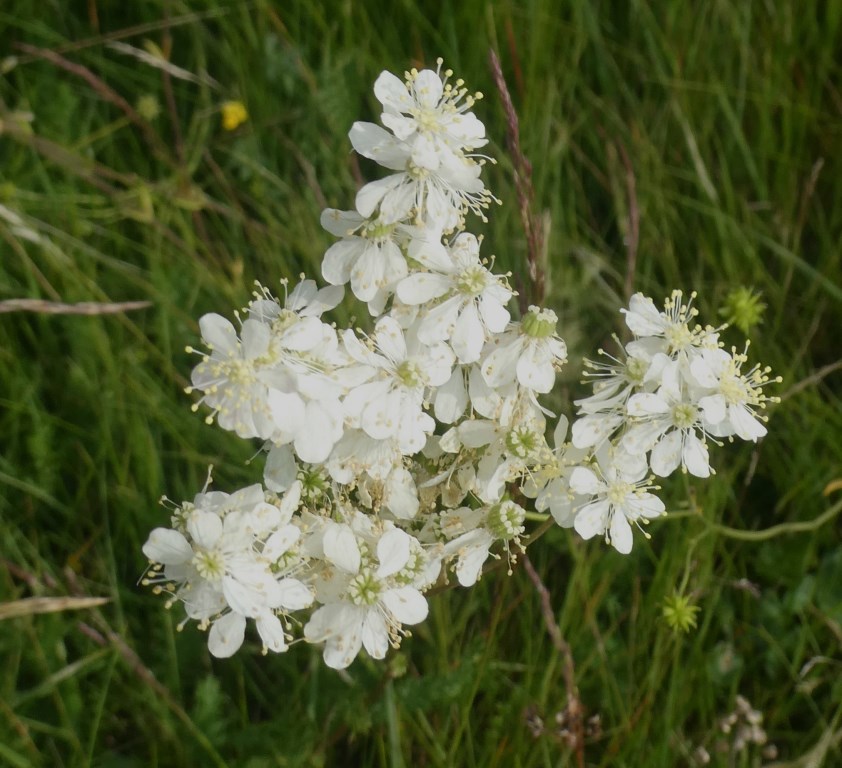
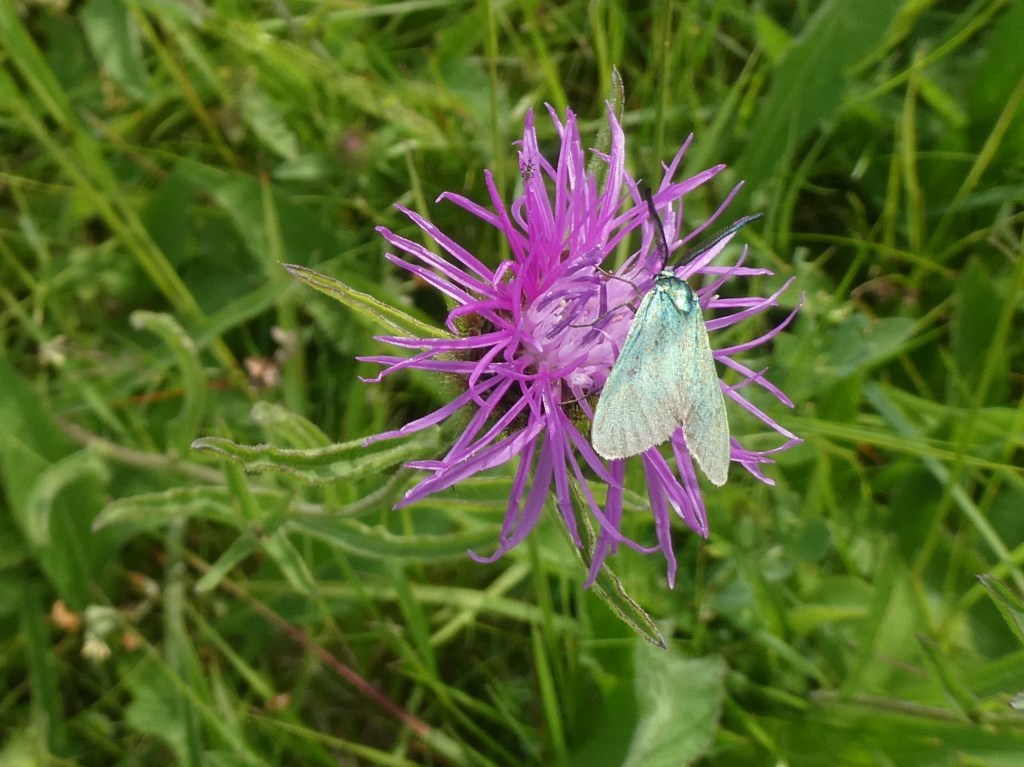
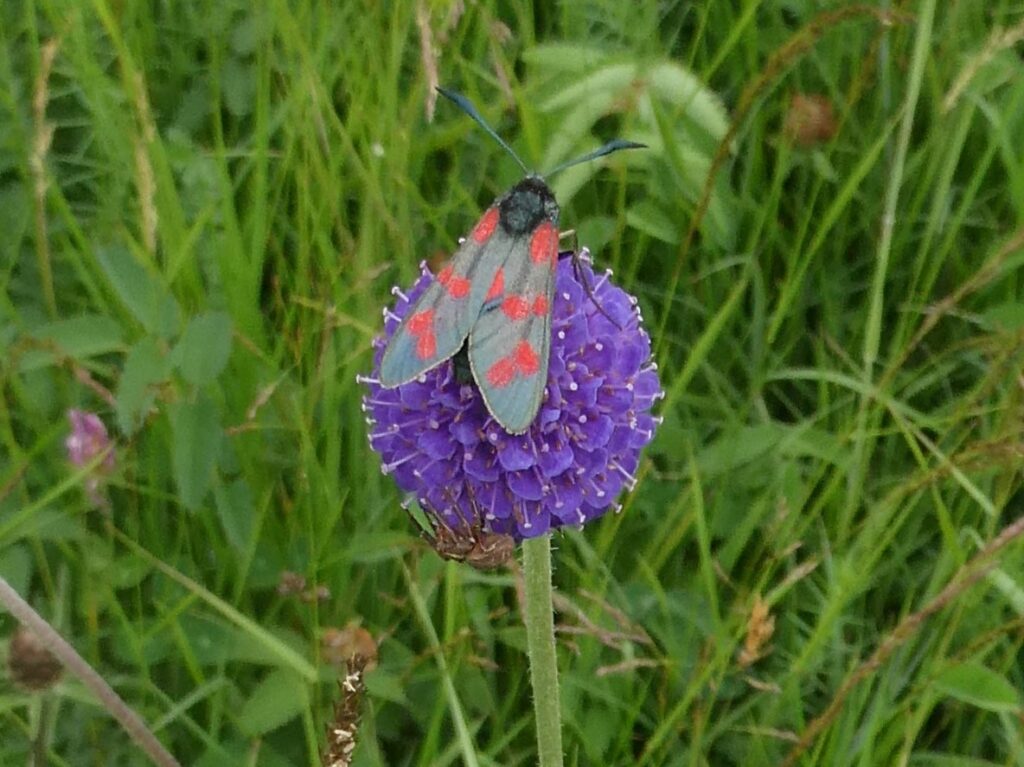
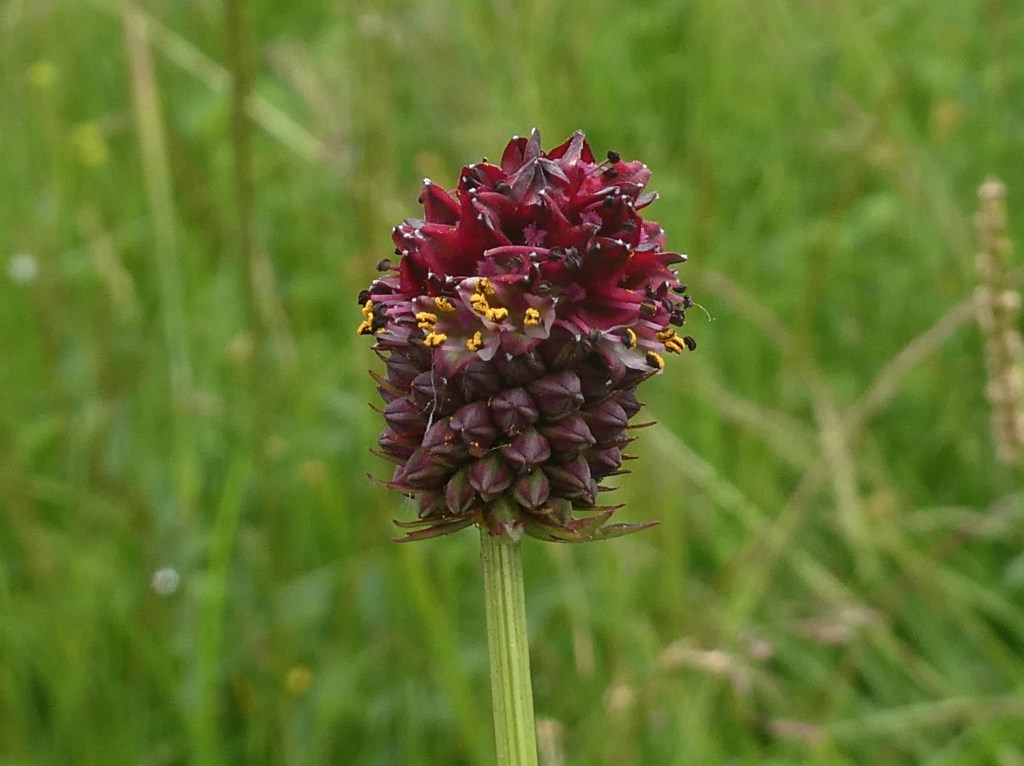
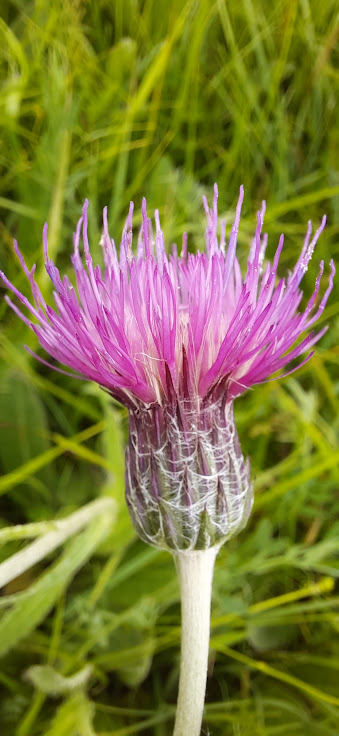
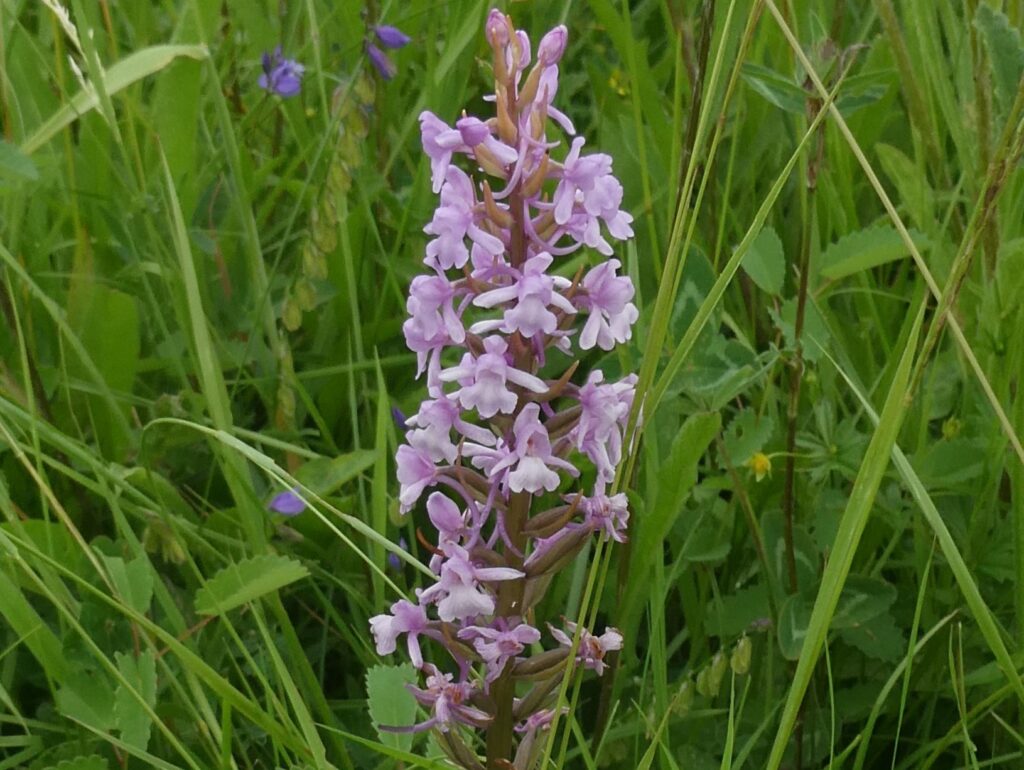
Pictures by Jim Wills and John Sharpe
